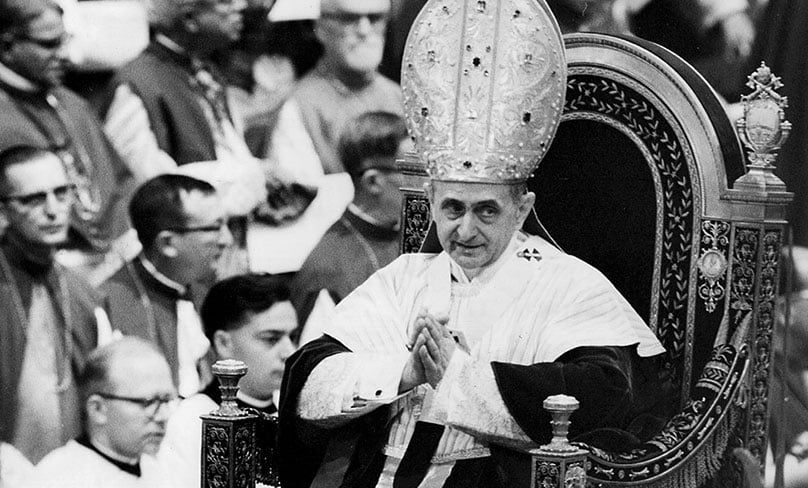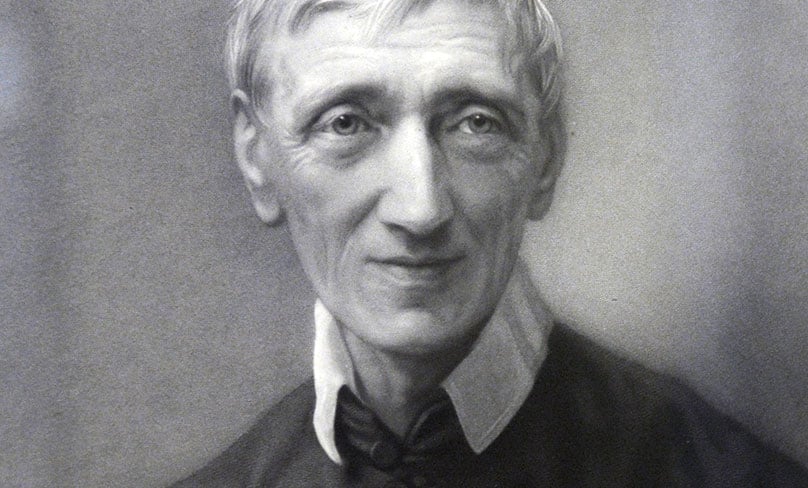
\The document, “Sensus fidei in the life of the Church”, was issued in 2014 by the International Theological Commission, an advisory body to the Holy See. In this column I will use it to write about the historical development of the sensus fidei and in the next I will continue.
One of the many scriptural foundations for the sensus fidei is in St John’s first letter: “You have been anointed by the Holy One, and all of you have knowledge … As for you, the anointing that you received from him [Christ] abides in you, and so you do not need anyone to teach you. But as his anointing teaches you about all things, and is true and is not a lie, and just as it has taught you, abide in him” (1Jn 2:20, 27).
“As a result, the faithful have an instinct for the truth of the Gospel, which enables them to recognise and endorse authentic Christian doctrine and practice, and to reject what is false. That supernatural instinct, intrinsically linked to the gift of faith received in the communion of the Church, is called the sensus fidei, and it enables Christians to fulfil their prophetic calling” (n. 2).
Already in the first centuries, the Fathers of the Church and theologians considered the faith of the whole Church, that is the universal belief on some matter of faith, to be a sure point of reference for discerning the authentic content of the apostolic tradition.
The Fathers refuted the errors of heretics by appealing to the belief and practice of all the churches.
For Tertullian, the fact that all the churches had substantially the same faith testified to Christ’s presence and the guidance of the Holy Spirit in them. St Augustine said Securus judicat orbis terrarum: the judgment of the whole world is sure (Contra epistolam Parmeniani, III, 24). And St Vincent of Lerins proposed as a sure norm of belief the faith that was held “everywhere, always and by everyone” (Commonitorium II, 5).
To resolve disputes the Church Fathers appealed not only to what was believed by all but also to what was practised by all. Thus St Jerome justified the veneration of relics by pointing to the common practice of the bishops and the faithful and St Epiphanius defended Mary’s perpetual virginity by asking whether anyone had ever dared to utter her name without adding “the Virgin”.
The sensus fidei of the bishops together with the laity was decisive in determining which of the many books circulating among the churches were to be accepted as divinely inspired and hence part of the canon of Scripture, as it was for defining major doctrines such as the divinity of Christ, the perpetual virginity and divine motherhood of Mary, and the veneration of the saints.

In later centuries the universal belief of the faithful was used to defend the Real Presence of Christ in the Eucharist, the Beatific Vision enjoyed by souls immediately upon their arrival in heaven, the Immaculate Conception of Our Lady and the infallibility of the Church. The Scholastics, including St Thomas Aquinas, held that the Church cannot err in matters of faith because she is taught by God through the Holy Spirit, who would lead her into the truth.
In refuting the arguments of the Protestants in the 16th Century, the Council of Trent appealed repeatedly to the belief of the whole Church in the previous centuries, that is to Tradition.
At that same time, Melchior Cano defended the infallibility of the Church in believing, and of the pastors in teaching, because they were guided by the Holy Spirit.
The 19th Century saw a renewed study of the sensus fidei by theologians such as Johann Adam Möhler, Giovanni Perrone and St John Henry Newman.
Newman wrote An Essay on the Development of Christian Doctrine (1845) in which he used St Augustine’s norm Securus judicat orbis terrarum to spell out the characteristics of faithful development in understanding doctrine, arguing that an infallible authority was also necessary to maintain the Church in the truth.
Later he wrote On Consulting the Faithful in Matters of Doctrine (1859) to demonstrate that the faithful, as distinct from their pastors, have their own active role to play in preserving and transmitting the faith.
As is clear, the sensus fidei is the faith of the whole Church, not of a handful of believers.
